#thomas holck
Explore tagged Tumblr posts
Photo




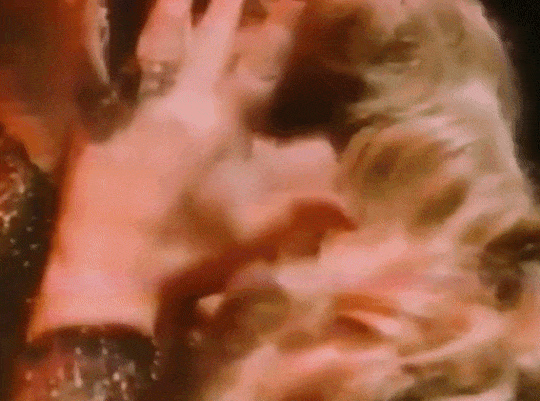

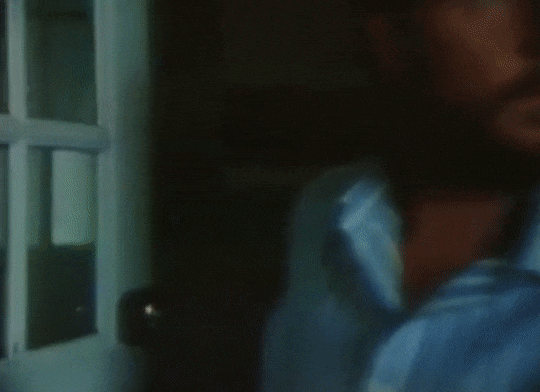

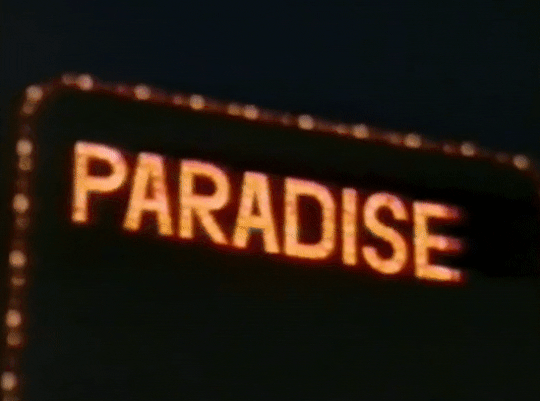
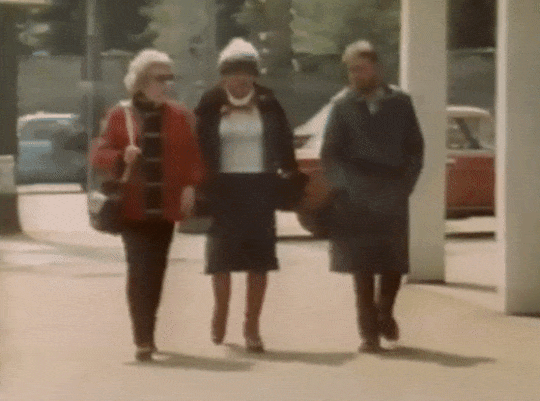
PARADISET ER IKKE TIL SALG (1985) dir. Teit Ritzau A portrait of three people who have undergone a gender-affirming surgery : Christine Jorgensen, the American soldier who came to Denmark, underwent an operation and thereby made international headlines; Hanne Rasmussen, a taxi-driver who changes their gender every morning; and Thomas Holck, a bearded, pipe-smoking trans man. Their stories are framed by the historical facts of the persecution of Magnus Hirschfeld in Germany just before the First World War. (link in title)
#drive link#lgbt cinema#trans cinema#paradise is not for sale#paradiset er ikke til salg#danish cinema#lgbt#trans#transgender#gender-fluid#denmark#documentary#lgbt movie#trans movies#danish movie#lgbt film#trans film#danish film#lgbt media#trans media#queer cinema#christine jorgensen#hanne rasmussen#thomas holck#teit ritzau#80s movies#1980s cinema#1985#1980s#80s film
33 notes
·
View notes
Note
Who do you think is the Phantom actor who played opposite more Christines?
I was thinking Scott Davies or Jeremy Stolle since they were sb and us for a lot of time
Possibly, but I think compared to some other names, they haven’t played opposite as many Christines. Here’s Stolle’s likely list:
Jennifer Hope Wills
Marni Raab
Susan Owen
Sara Jean Ford
Trista Moldovan
Samantha Hill
Sierra Boggess
Mary Michael Patterson
Sarah Bakker
Julia Udine
Rachel Zatcoff
Ali Ewoldt
Rachel Eskenazi-Gold
Kaley Ann Voorhees
Eryn LeCroy
Meghan Picerno
That gives him 16 Christines, which is a good number, but not as high as others, probably because many of the Christines he played with had long runs (Marni Raab) or kept returning (Sara Jean Ford, Kaley Ann Voorhees), plus the understudy Christine throughout his time has generally been the same person, Elizabeth Welch. Keep in mind too that it’s not guaranteed he’s played with all of these women either, most especially Sarah Bakker. And I also didn’t take into account that period of time when he left the Broadway production to be in something else.
And it pales in comparison to a likely list of Scott Davies’s Christines:
Zoe Curlett
Katrina Murphy
Joanne Pullen
Charlotte Page
Meredith Braun
Colleen Patrice Taylor
Claire Louise Hammacott
Deborah Dutcher
Gina Beck
Tabitha Webb
Sofia Escobar
Katie Hall
Claire Doyle
Katy Treharne
Anna O’Byrne
Ashleigh Fleming
Harriet Jones
Olivia Brereton
Emmi Christensson
Celinde Schoenmaker
Lisa-Anne Wood
Maria Coyne
Bridget Costello
Amy Manford
Kelly Mathieson
Corinne Cowling
That gives Davies a whopping 26 Christines, maybe with 1-2 more understudies that I couldn’t find. And keep in mind that I have audios of him with almost all these women, unlike with Stolle.
But I look at Stolle and Davies and raise you an Ian Jon Bourg:
Sandra Joseph
Susan Owen
Marie Danvers
Megan Starr-Levitt
Lori Zeglarski
Alison Kelly
Valentina Kozhanova
Olivia Safe
Colby Thomas
Janine Kitzen
Kristin Holck
Marion Wilmer
Maike Switzer
Sandra Danyella
Beatrix Reiterer
Martina Rumpf
Anne Gorner
Sarah Elizabeth Combs
Kristen Hertzenberg
Kristi Holden
Emilie Lynn
Claire Lyon
Sara Sarres
Clara Verdier
Megan Ort
Meghan Picerno
Caitlin Finnie
Kaley Ann Voorhees
That’s 28 Christines, not counting several understudies that he might also have performed with on the US tour, Vegas, and the World Tours.
Operafantomet also made this post where she suggested both Peter Karrie (anywhere from 16-19 Christines) and John Owen-Jones (19 Christines at the time, but that post was written 8 years ago and so did not include his 2015-2016 London run, which would add Celinde Schoenmaker, Emmi Christensson, Lisa-Anne Wood, and Harriet Jones as an emergency cover to the list - 23 Christines!).
So there you have it.
#Anonymous#GP gets asks#I'd put someone like Osamu Takai but I don't know the names of most of his Christines
20 notes
·
View notes
Video
Nothing happens VR installation from Michelle & Uri Kranot on Vimeo.
Nothing happens is both a cinematic and Virtual Reality experience which question the role of the spectator, by inviting the individual to participate in an event. VR allows us to choose our perspective, allows us to become absorbed in the unique atmosphere. The project explores a different kind of narrative, a new way of being in a painting.
The installation is created in collaboration with Sara Topsøe-Jensen and Carte Blanche.
The project is supported by: The Animation Workshop and Viborg Kommune. Det Danske Filminstitut v. Filmkonsulent Cecilia Lidin Den Vestdanske Filmpulje Centre national du Cinéma et de L’image Animée – Aide à la Production Avant Réalisation Anis
Nothing Happens is produced by Dansk Tegnefilm (DK) and MIYU (FR).
credits: Film and VR by: Michelle and Uri Kranot Installation by: Sara Topsøe-Jensen Produced by: Marie Bro, Emmanuel-Alain Raynal, Pierre Baussaron Art Director: Michelle Kranot Music: Uri Kranot Technical Director: Morten Andersen Technical advisor: Milan Grajetzki Composite: Sara Aunbirk, Uri Kranot Music arrangement and mix: Thomas Richard Christensen Musicians: Ellen Holck, Storm Kleist, Jody Ghani Nordby, Thomas Richard Christensen Sound: Sofie Birch, Thomas Ahlmark Costumes: Betina Møller Choir: Sia Søndergaard, Signe Cold, Juliette Viger, Jody Ghani Nordby, Michelle Kranot Animation: Michelle Kranot, Uri Kranot ,Marine Duchet, Juliette Viger, Fabien Corre Special effects: Denis Chapon
EXHIBITIONS: 2018 Nothing Happens VR, Zagreb animation festival 2018 Nothing Happens VR, Kunsthalle Wien, Vienna, Austria. 2018 Nothing Happens VR, Kunstmuseum Stuttgart, Germany. 2017 Nothing Happens VR, Today Art Museum Beijing, China. 2017 Nothing Happens VR, Stieglitz State Academy of Art and Design, St Petersburg, Russia. 2017 Nothing Happens VR, Bergen film festival, Norway. 2017 Nothing Happens VR, Stockholm film festival, Sweden. 2017 Nothing Happens VR, Culture fest Lubek, Germany. 2017 Nothing Happens VR, World Creativity Forum, Denmark. 2017 Nothing Happens VR, Venice Film Festival La Biennale di Venezia, Italy. 2017 Nothing Happens VR, Kunsthal Charlottenborg, CPH , Denmark. 2017 Nothing Happens VR, Viborg Kunsthal, Viborg, Denmark. 2017 Nothing Happens VR, Værkstedsscenen, Viborg, Denmark. 2017 Nothing Happens VR, Kulturmødet Mors, Denmark. 2017 Nothing Happens VR, Fantoche, Baden, Switzerland.
AWARDS 2017 Nothing Happens , Best Film, Kurzfilmfestival Köln, Germany. 2017 Nothing Happens, Special mention, Anilogue Budapest, Hungary. 2017 Nothing Happens , Best Film, Kurzfilmfestival Köln, Germany. 2017 Nothing Happens , Best Film, Anibar Int. Animation festival, Kosovo. 2017 Nothing Happens, Best International film, Odense film festival, Denmark. 2017 Nothing Happens, Best film, Tofuzi Int. film festival, Georgia. 2017 Nothing Happens , Best Film , Banjalukanima film festival, Bosnia & Herzegovina. 2017 Nothing Happens , Anima award, The International Film Festival Etiuda&Anima, Poland. 2017 Nothing Happens , Special Mention, Fredrikstad Animation Festival, Norway. 2017 Nothing Happens , Winner AFTRS International VR Competition, Adelaide Film Festival, Australia. 2017 Nothing Happens , Honorable Mention, The Kuandu International Animation Festival, Taiwan. 2017 Nothing Happens VR, The Lumen prize, UK. 2017 Nothing Happens VR, Prix immersion. Festival du nouveau cinéma , Canada. 2017 Nothing Happens (film), Special Mention, Animafest Cyprus 2017 Nothing Happens (film), Prix André Martin for “Best French short film”, Annecy Int. Animation FF 2017 Nothing Happens (film), Prix Festival Connexion Région Auvergne-Rhone-Alpes, Annecy International Animation Film Festival, France
0 notes
Text
Can a Low-Gluten Diet Improve Your Health (even if you don't have celiac disease)?

MedicalResearch.com Interview with:

Professor Oluf Pedersen Novo Nordisk Foundation Center for Basic Metabolic Research University of Copenhagen MedicalResearch.com: What is the background for this study? Response: We focused our study on healthy people due to the world-wide bottom-up movement among healthy adults to live gluten-free or on a low-gluten diet. Therefore, we undertook a randomised, controlled, cross-over trial involving 60 middle-aged healthy Danish adults with two eight week interventions comparing a low-gluten diet (2 g gluten per day) and a high-gluten diet (18 g gluten per day), separated by a washout period of at least six weeks with habitual diet (12 g gluten per day). The two diets were balanced in number of calories and nutrients including the same total amount of dietary fibres. However, the composition of fibres differed markedly between the two diets. When the low-gluten trend started years back the trend was without any scientific evidence for health benefits. Now we bring pieces of evidence that a low-gluten diet in healthy people may be related to improved intestinal wellbeing due to changes in the intestinal microbiota which to our surprise is NOT induced by gluten itself but by the concomitant change in the type of dietary fibres linked to a low-gluten intake. MedicalResearch.com: What are the main findings? Response: Based on our observations of altered food fermentation patterns of the gut microbiome, we conclude that the effects of low-gluten dieting in healthy people is NOT due to reduced intake of gluten itself but rather to a change in dietary fibre composition by reducing fibres from wheat and rye and replacing them with fibres from vegetables, brown rice, corn, oat, quinoa and other non-gluten containg whole grain cereals. In comparison with a high-gluten diet, a low-gluten, fibre-rich diet (other types but the same total amount) induces changes in the structure and function of the complex intestinal ecosystem of bacteria, reduces hydrogen exhalation, and leads to improvements in self-reported bloating and other intestinal comfort indicators. Moreover, during the 2 month of low-gluten dieting, the healthy individuals lost on overage 0.8 kg, likely due to increased body combustion (increased whole body thermogenesis) triggered by the altered gut bacterial functions eliciting increases in the plasma concentration of the gut hormone PYY, the fecal concentration of the microbial compound kynurenine and the concentration of the urine compound beta-amino-iso-butyric acid ( all three compounds are known to enhance thermogenesis. MedicalResearch.com: What should readers take away from your report? Response: If they for some personal reasons prefer to stick to a low-gluten diet they can do it without expected adverse effects provided they eat high-fibre containing low-gluten products that are balanced in macro- and micronutrients. However, most gluten-free food items available on the market today are massively deprived of dietary fibers and natural nutritional ingredients. Filled with additive and preservatives, sugars and unhealthy fats. Therefore, there is an obvious need for availability of fibre-enriched, nutritionally high-quality gluten-free food items which are freshly produced or minimally processed to consumers who prefer a low-gluten diet. Such initiatives may turn out to be key for alleviating gastro-intestinal discomfort and in addition to help facilitating weight control in the general population via modification of the gut microbiota. Therefore, by now we think that our study is a kind of wake-up call to the food industry and gourmet bakeries to produce a wide assortment of delicious non-wheat, non-rye wholegrain cereals (corn, brown rice, millet, buckwheat, quinoa, chia and gluten free oat) enriched with dietary fibres from vegetables (eg. carrots, squash), apple, psyllium seed husks, beans, chicory etc. You can bake the most healthy and most tasty bread, buns and pastries in this way. Innovations like this are highly needed for healthy people choosing a lifestyle with no gluten but associated with other types of dietary fibres, the microbial digestion of which cause less intestinal gas production and facilitate weight control . MedicalResearch.com: What recommendations do you have for future research as a result of this work? Response: More long-term clinically studies are needed both in healthy individuals and in well-defined groups of people suffering from gluten sensitivity, irritable bowel syndrome, Crohn disease and ulcerative colitis. Citation: Lea B. S. Hansen, Henrik M. Roager, Nadja B. Søndertoft, Rikke J. Gøbel, Mette Kristensen, Mireia Vallès-Colomer, Sara Vieira-Silva, Sabine Ibrügger, Mads V. Lind, Rasmus B. Mærkedahl, Martin I. Bahl, Mia L. Madsen, Jesper Havelund, Gwen Falony, Inge Tetens, Trine Nielsen, Kristine H. Allin, Henrik L. Frandsen, Bolette Hartmann, Jens Juul Holst, Morten H. Sparholt, Jesper Holck, Andreas Blennow, Janne Marie Moll, Anne S. Meyer, Camilla Hoppe, Jørgen H. Poulsen, Vera Carvalho, Domenico Sagnelli, Marlene D. Dalgaard, Anders F. Christensen, Magnus Christian Lydolph, Alastair B. Ross, Silas Villas-Bôas, Susanne Brix, Thomas Sicheritz-Pontén, Karsten Buschard, Allan Linneberg, Jüri J. Rumessen, Claus T. Ekstrøm, Christian Ritz, Karsten Kristiansen, H. Bjørn Nielsen, Henrik Vestergaard, Nils J. Færgeman, Jeroen Raes, Hanne Frøkiær, Torben Hansen, Lotte Lauritzen, Ramneek Gupta, Tine Rask Licht, Oluf Pedersen. A low-gluten diet induces changes in the intestinal microbiome of healthy Danish adults. Nature Communications, 2018; 9 (1) DOI: 10.1038/s41467-018-07019-x The information on MedicalResearch.com is provided for educational purposes only, and is in no way intended to diagnose, cure, or treat any medical or other condition. Always seek the advice of your physician or other qualified health and ask your doctor any questions you may have regarding a medical condition. In addition to all other limitations and disclaimers in this agreement, service provider and its third party providers disclaim any liability or loss in connection with the content provided on this website. Read the full article
1 note
·
View note
Text



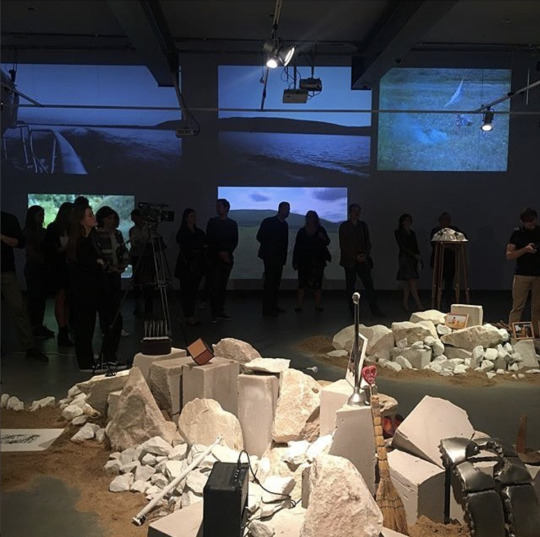

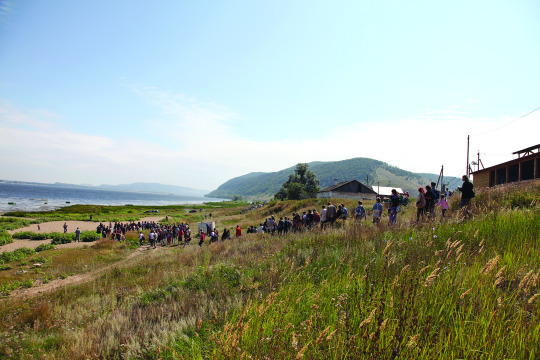

“Shiryaevo Biennale. Central Russian Zen” 31/08/17–08/10/17
Media preview with exhibition curators: 31/08, 5 p. m. Exhibition opening: 31/08, 6.30 p. m.
On August 31, 2017, “Shiryaevo Biennale. Central Russian Zen” exhibition will be opened in the National Centre for Contemporary Arts, part of ROSIZO. The project of Samara branch will be the third one on the regional project site of the NCCA in Moscow. The exhibition is a metaphorical reflection on the experience of the oldest active international biennale of contemporary art in Russia, which has been held since 1999 in the ancient Russian village of Shiryaevo on the Volga bank, one of the most beautiful places of the Samara bend surrounded by the Zhiguli Nature Reserve on all sides. The Shiryaevo Biennale was intended and carried out as an international experimental project by famous Russian curators Nelya Korzhova and Roman Korzhov, the founders of the Samara Regional Public Charity Foundation “The Centre for Contemporary Art” with active contribution from Hanns-Michael Rupprechter and the Stuttgart Union of Artists from Germany as well as a group of artists from Kazakhstan headed by Rustam Khalfin.
The exposition will be based on the archive of the biennale; photos, videos, objects and installations from the personal collection of Nelya Korzhova and Roman Korzhov. However, at the same time, the exhibition goes beyond the traditional retrospective and creates an idea of the biennale’s authentic image for the widest audience. The conceptual solution of the exhibition is a large-scale video chronicle of the project, as well as the exhibition hall covered in river sand and stands from quarry stone mined in Shiryaevo for the last 200 years — it is a total installation representing a kind of mental map of Shiryaevo. The exposition gives an opportunity to feel the unique atmosphere of the biennale, reflects the ideas of contemplative and performative nature of the event and becomes a starting point for a conversation about the history of its creation.
The strategy of the Shiryaevo Biennale is aimed at finding new forms of contemporary art communication in social environment. The form of the main biennale project, “creative laboratory” and “nomadic show”, is Nelya Korzhova’s original idea uniting the Eastern concept of nomadism, referring to free movement, wandering, and the Western concept of a “show”, a public presentation. The space for creation display during the “nomadic show” is the entire village of Shiryaevo with the surrounding landscape: the Volga, mountains, mines, lake shore, village houses and streets. As an artistic phenomenon, the “nomadic show” stands closest to mystery play evolving in time and space and changing the experience of those who participate in it. It makes visitors follow a unique route and experience the meditative qualities of the Central Volga landscapes, a kind of “Central Russian Zen” reflecting the biennale’s setting for contemplation, intangibility, emptiness, and absence of any tracks left behind.
The Shiryaevo Biennale offers not only an alternative to the traditional functioning of art within the framework of the “white cube” concept, but also a strategy of independence from the vertical of power in art. Created by “artists for artists” the biennale turned out to be resistant to shocks and succeeded in surviving as a special experience of international co-creation. The condition of artists’ living in the houses of local residents is seen as a way of creating a perfect environment for artistic expression. The main idea of this experiment is to give an artist a chance to start working from scratch without feeling the pressure from his or her established image and the art market technologies.
Today the Shiryaevo Biennale is the best internationally known contemporary art event in the Samara Region. Throughout the years the biennale has hosted artists and curators of special programs from Russia, Kazakhstan, Germany, France, Great Britain, Sweden, Austria, Italy, Lithuania, Estonia, Armenia, Denmark, the USA, the Netherlands, Singapore and Norway.
The exhibition will be accompanied by an educational and performative program both in the building of the Moscow branch of the NCCA and in the city space.
Artists Hanns-Michael Rupprechter, Ulli Berg, Andreas Bar, Juergen Kierspel, Regis Pinault, Marlene Perronet, Rustam Khalfin, Sergey Maslov, Georgy Tryakin-Bukharov, Zauresh Madanova, Galim Madanov, Nelya Korzhova, Roman Korzhov, Oksana Stogova, Francisco Infante, Nonna Goryunova, Angela Arsinkey, Vanessa Henn, Viktor Vorobyov, Vito Pace, German Vinogradov, Tutti Frutti group, Evgeny Ryabushko, Elena Vorobyova, Erbolsyn Meldibekov, Jonas Valatkevicius, Martin Rogers, Nata Morozova, Vladimir Logutov, Andrey Syaylev, Kira Subbotin, Natalya Syzgantseva, Nikita Volchenkov, Vito Pace, Ilya Polyakov, Natalya Elmanova, Sergey Krivchikov, Alexey Zaytsev, Stephan Koeperl, Sylvia Winkler, Ellen Rein, Natalya Fomicheva, Alexandr Ovchinnikov, Elena Morozova, Peter Haury, Elke Hammelstein, Iris Hellriegel, Anatoly Osmolovsky, Vazgen Rakhlavuri-Tadevosyan, Gerd Viedmajer, Viktoria Lomasko, Diana Machulina, Diego Sarramon, Natalya Samkova, Anna Orekhova, Alexandr Korneyev, Alexey Kallima, Arpine Tokmajan, Sergey Balandin, Artem Ivashkin, Ignat Daniltsev, Vitaly Stadnikov, Oleg Lyuboslavsky, Svetlana Subbotina, Joe Lee, Yulia Zhdanova, Ruediger Schestag, Yuri Albert, Anna Brochet, Bertrand Vallet, Gero Goetze, Marie-Helene Dubreuil, Yulia Zhdanova, Romain Gibert, Mari Kartau, Alexey Kostroma, Gert Mezger, Sabine Pfisterer, Emmanuel Rodoreda, Krishna Subramania, Mare Tralla, Anfim Khanykov, Matthias Holland-Moritz, Alexander Schikowski, Jochen Gerbert Schloder, Zvetofor group, “Escape” program, Georg Zaiss, Anna Korzhova, Andrey Kuzkin, Emilie Pischedda and Valentin Souquet, Haim Sokol, Oksana Stogova, Manfred Unterwerger, Wolfgang Spaeth, Greta Weibull, Klas Eriksson, Ingela Ihrman, Kalle Brolin and Kristina Muentzing, Elena Dendiberya and Anatoly Haiduk, Janno Bergman, Andrus Joonas, Martina Geiger-Gerlach, Kathrin Sohn, Barbara Karsch-Chaïeb, Rosa Ruecker, Ivan Lungin, Pia Maria Martin, Susanna Messerschmidt, Astrid Nylander, Calle Holck, Johanna Karlin, Swetlana Heger, Katrin Hornek, Martial Verdier, Gabriel Feracci, Lewden Martin, Sybille Neeve, Ciro Vitale, Alexandr Zaytsev, Mikhail Lezin, Ivanhoe, Vladimir Arkhipov, Serious Collision Investigation Unit Coalition group (Felix Gmelin, Alan Armstrong, Joakim Forsgren, Mikael Goralski, Amanda Hårsmar, Ronak Moshtaghi, Kjersti Austdal), Paulo Paes, Radesign group (Anton Rakov, Yulia Ratieva), Darya Emelyanova, Dmitry Kadyntsev, GKP group (Vitaly Cherepanov, Anna Mineeva), Dominika Skutnik, Marek Frankowski, Antibody Corporation (Adam Rose, April Pollard), Eryka Dellenbach, Merzedes Sturm-Lie, André Talborn, Alexey Trubetskov, Olga Kiselyova, Alisa Nikolaeva, Nicolas Courgeon, S’ilTePlait group (Bernard Touzet, Théophile Péju, Pierre-Loup Pivoin, Raphaël Saillard), Club Fortuna group (Kurdwin Ayub, Xenia Lesnievski, Julia Rublov, Sarah Sternat, Maarten Heijkamp, Nana Mandl, Thomas C. Chung), U/n Multitude group (Nikita Spiridonov, Elena Zubtsova, Ilya Fomin), YUNRUBIN group (Joanne Pang Rui Yun, Jonas Rubin), Maria Kryuchkova, Ilya Samorukov. Films by Hanns-Michael Rupprechter “Multivitamin Cocktail”, 1999, and YUNRUBIN group (Joanne Pang Rui Yun and Jonas Rubin), Singapore/Denmark, “Dollar Hauler on the Volga”
Venue: National Centre for Contemporary Arts (13/2 Zoologicheskaya Street) Curators: Nelya Korzhova, Roman Korzhov Co-curator: Alexandr Burenkov Architects: “NOVOE” Architectural Bureau
http://www.ncca.ru/articles.text?filial=9&id=349 http://www.ncca.ru/events.text?filial=2&id=4252 http://www.colta.ru/articles/art/16875 https://syg.ma/@knowitall/shiriaievskaia-biiennalie-sriednierusskii-dzien
youtube
0 notes
Note
Could you give some examples of reasons people in your “adore” category didn’t reach the “favorite” level? Obviously you don’t have to write about every single one, because you have a life outside of tumblr.
Sure. Actually, a lot of them are only in “Adore” because of the same reasons, namely...
1. Lack of material. Many of the people on there only had audio or grainy video footage, and while they were seriously impressive, I still felt I was missing part of their performance, and so were kept at a slightly lower (but still really good!) rating. (I think there’s only three people who ever got up to ‘Favorite’ based on audio or crappy video alone: Michael Crawford, Rebecca Caine, and Elisabeth Berg.)
People who fall under this category: Dave Willetts, Mikael Samuelson, Steve Barton, Tim Tobin, Flemming Enevold, Yoon Young Seok, Tomas Ambt Kofod (both Raoul and Phantom - though there’s video of his Phantom so that might change soon!), Claire Moore, Maria Kesselman, Jan Hartley-Morris, Patti Cohenour, Rebecca Luker, Susan Cuthbert, Glenda Balkan, Hye Kyoung Lee, Kim So Hyun, Janine Kitzen, Kristin Holck, Mia Karlsson, Tabitha Webb, Julie Goodwin, Michelle van de Ven, Emmi Christensson, Lisa-Anne Wood, Kelly Mathieson, Michael Ball
2. Just needed an extra “oomph”. Basically, they were super, super good, but were just lacking that special something, maybe a bit more uniqueness, that would’ve pushed them over the edge. Or maybe they were practically perfect but did something that I didn’t quite appreciate as much; most commonly, they got a bit too campy, or a bit too over-the-top, or something. Or they had a fairly conventional interpretation but just did it so, so well, and that actually pushed them up to “Adore”, but not quite to “Favorite”.
People who fall under this category: Alexander Goebel, Thomas James O’Leary, Brad Little (overacts a bit sometimes - but it’s so much fun), Ian Jon Bourg (falls into the “conventional but so good!” category), Saulo Vasconcelos, Hans Peter Janssens, Scott Davies (gets just a bit campy at times), Gary Mauer, John Cudia (a little too violent), Jeremy Stolle (a little too restrained), Lisa Vroman, Irasema Terrazas, Alison Kelly, Olivia Safe, Sofia Escobar, Mary Michael Patterson, Valerie Link (another in the “conventional but so good!” area), Kaley Ann Voorhees (could be a bit stronger in Act 1), Jim Weitzer, Will Barratt, Greg Mills
3. Exceptions. Sometimes I really do have a special reason for keeping them here.
People who fall under this category: Kevin Gray (that piercing voice of his - it’s unique but augh, I can’t really listen to him for long periods of time), Sarah Brightman (her unique style of acting is both a strength and a downfall), Ana Marina (a very fast, very heavy vibrato makes it easy to tell when it’s her but also a bit hard to listen to), Anna O’Byrne (something about her voice always sounded a bit weak)
And I think that accounts for everyone.
7 notes
·
View notes
Note
Who are your favorite cast members from Elisabeth? I just recently got into it and was wondering your opinion
Ah, it’s been a while since I really watched Elisabeth, but I’ll see what I can do. I tend to focus mostly on the character of Elisabeth, and sometimes Death, so I guess some of my favorites would be:
Elisabeth - Maya Hakvoort is one of my favorites; while I’m a bit iffy about her voice, which sounds almost thick and throaty, I love her acting and how complicated and selfish, yet understandable, she made her Elisabeth. Ann van den Broeck was another; great voice, great acting, really good at showing how her character kept changing as the show went on. Janneke Ivankova has been one of the few actresses in recent times that I liked; she really showcased how manipulative her character could be at times.
I also remember really liking Wietske van Tongeren, Kristin Holck, and Ock Ju-Hyun when listening, mainly due to how emotional they were. And finally, I remember finding Shirahane Yuri and Ootori Rei some of my favorites from the Takarazuka productions, probably because they played Elisabeth less romanticized and helpless (which is the tendency in the Takarazuka productions) and more how she appears in the original productions. Oh, and I guess I should mention that I really enjoyed Pia Douwes’s Elisabeth in the original Vienna production, who was so raw and bitter; she toned it down and made Elisabeth seem more... heroic, almost, in later productions, which I found less enjoyable.
Death - Uwe Kroger in the original Vienna production was just incredible, very stoic, very inhuman, very much a force of nature; his Death in later productions was more kitschy. I liked Oliver Arno’s Death for much the same reason. I’ve fallen a bit out of love with the overly masculine, “sexy” type Deaths like Máté Kamarás, but I still appreciate the latter’s energy. And while there’s only audio, I adored how Martin Pasching sounded when singing the role, so smooth and so at ease with the score that he was practically playing with the notes.
Lucheni - Like a lot of people, I loved Serkan Kaya’s take on Lucheni, which was dryly humorous and less “crazy”. He also gave Lucheni something of a character arc, someone who is attempting to use the musical to justify what he did but who is less and less able to maintain that delusion as the show ends. I did like Kurosch Abbasi’s take as well; he made me laugh a few times.
Others - I still really enjoy Andre Bauer’s Franz Joseph; I thought he did well at showing someone who is kind of stiff and very duty-bound, but who underneath it all, deeply cares for Elisabeth but is unable to really show it. I also remember enjoying Michael Shawn Lewis’s take and... I think it was Franziskus Hartenstein? Though I can’t quite recall why off the top of my head. As for Rudolf, Martin Pasching and... I think Thomas Hohler?... did really well at capturing Rudolf’s nervous, almost neurotic side and his intense and desperate bond with Death.
15 notes
·
View notes